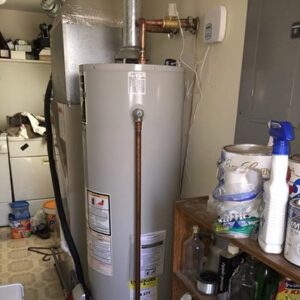Key Components of Residential Plumbing


Your home has a complex system of pipes to bring water in, move it through your plumbing, and drain it out. The first pipes you’ll encounter are the water supply pipes. These are the water supply lines that bring fresh drinking water into the house. Once that fresh drinking water has been delivered, it’s time for another set of pipes: your distribution system.
This is made up of smaller diameter copper or plastic tubing that connects fixtures like sinks and showers to main lines inside your walls or under your floors. You’ll also have drainpipes connected to drains below each fixture so that wastewater can flow out when you turn on the faucet or flush a toilet.
If you’ve ever wondered how water gets from the street to your faucet or why your toilet flushes, this is the article for you! We’ll explain each of the parts that make up a residential plumbing system and what they do so that you can understand what goes on under your sink.
Water Service Lines
Water service lines are the pipes that connect your home to the municipal water supply. They’re usually buried underground and made of copper, cast iron, galvanized steel or PVC.
You can test for leaks by placing a bucket under a suspect fixture (such as a sink) or by using an inexpensive pressure gauge that you attach to your main shutoff valve. If there’s no leak in this area, it’s likely that something else is causing your problem—like an appliance with a faulty hose connection or a faucet washer that needs replacing.
Water Supply Piping and Valves
Copper tubing is the most common for indoor plumbing. It comes in schedule 40, 80 and 120 sizes; larger numbers mean smaller diameter (for example, 3/4″ pipe size has a smaller diameter than 1/4″).
The smallest size available is .315″, but this is not typically used for residential work. Larger diameters are usually required only when running from the street to your house or when replacing the existing copper pipe with anew copper pipe at a different location in your home.
PVC pipes may be used as an alternative to copper if you don’t want metal chips getting into the soil around your house but still need good corrosion resistance against chemicals like chlorine that might be present in the water supply lines or underground drainage system.
Additionally, there are fittings to ensure that your pipes are appropriately connected so they don’t leak or break apart under pressure over time! You’ll need connectors like unions where two different types of piping meet (e.g., galvanized steel with PVC) along with regular fittings like elbows or tees on each end of every run between fixtures such as sinks, faucets, toilets, showers, etc…
Drains, Wastes and Vents
Drains, Wastes and Vents are the three main types of plumbing fixtures. There is a lot that goes into each part of their design, but they all serve the same purpose: to get rid of unwanted water.
A drain is a pipe that allows water to exit your home. It can be created in several different ways, depending on what type of material you use to make it out of. Drains are generally made from either metal or plastic over time due to wear and tear on regular materials like wood or stone.
Wastes are tubes used as conduits for wastewater flow from fixtures such as toilets and sinks into drains outside your home through pipes called “waste lines.” Wastes allow for more efficient cleaning because they keep things separate from other parts like sinks, where food particles could get stuck inside if left untreated!
Vents are used in conjunction with drains by providing ventilation between them so air doesn’t build up when there isn’t enough flow coming through either side (which could lead to clogs).
Water Heaters and Storage Tanks
Water heaters and storage tanks are important components of residential plumbing systems that provide hot water for bathing, cleaning, dishwashing and other household tasks. These devices do not wear out as quickly as other plumbing parts; however, it is important to maintain the safety and efficiency of your system by keeping all components in good condition.
The two main types of water heaters used in homes are tank-style water heaters and tankless heaters. Tank-style heaters store hot water inside the unit until it is needed, then distribute the heated liquid directly into the home’s plumbing system through one or more output lines at a preset temperature level (usually between 120°F – 140°F).
Tankless water heaters use electricity to generate hot water as needed within seconds rather than storing large amounts of heated liquid at once.
Water Treatment Systems
A water treatment system is a device used to remove water contaminants. Water treatment systems are used in both residential and commercial properties, as well as industrial settings. There are two ways in which a water treatment system can be installed on the main water line: inline or under-sink.
Inline treatment devices are attached directly to the faucet or fixture, whereas an under-sink unit can be placed underneath your sink and connected to any tap to provide filtered drinking water throughout your home.
Conclusion
Your residential plumbing system is made up of many interesting components. The entire system works from start to finish to bring fresh water to your home and properly dispose of the wastewater.
In this article, we’ve covered some of the basics of residential plumbing. We hope you feel more confident about how your home’s water system works and what can go wrong with it. If you think your pipes are leaking, or if something seems off in how they work, contact plumbers near you as soon as possible!
RECENT POSTS
categories
Archives
2024
2023
2022
2021
2020
2019
- December (2)
- November (2)
- October (2)
- September (2)
- August (2)
- July (2)
- June (2)
- May (2)
- April (2)
- March (2)
- February (2)
- January (2)

